Death metal is a style of heavy metal music that was first popularized in the late 1980s and early 1990s. Death metal vocals are typically harsh and guttural, with lyrics usually about violence, gore, and death. If you want to sing death metal vocals now, there are some steps you should take to get started.
Table of Contents
Rules of Singing Extreme Metal:
1. Death metal is an organic vocal effect
You should use your throat, pharynx, and diaphragm to get this effect.
This will allow the sound of the voice (and in particular low frequencies) to resonate more powerfully inside the oral cavity being used during the production of a given pitch or tone by setting up a sympathetic vibration in its air cavities.
To do this correctly you must expand all three chambers within where sound resonates:
- velopharyngeal space;
- nasopharyngeal space;
- oropharynx/lateral wall sphincter muscles quarters;
- contracting thyrohyoid muscle that raises the floor of the pharynx;
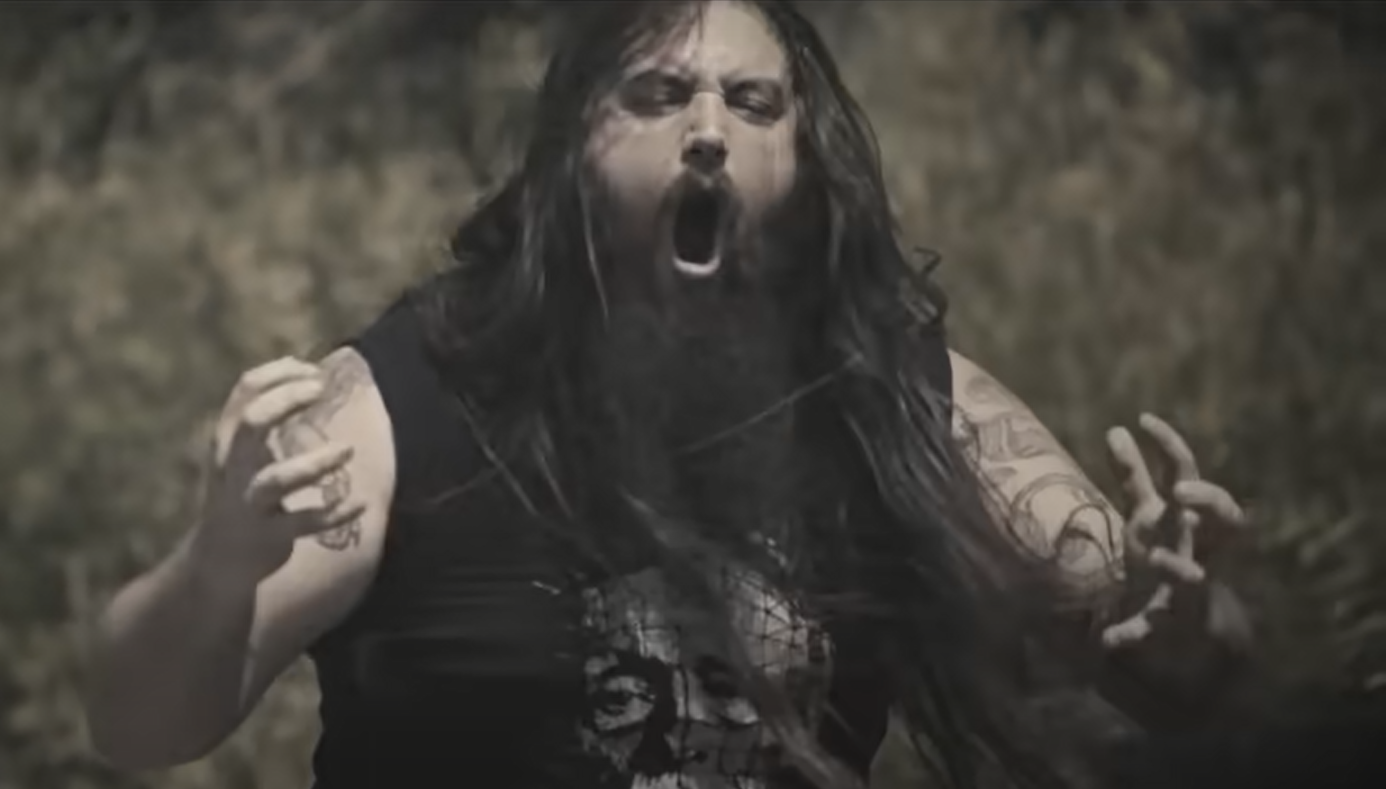
It is also important to note that for this effect, you should produce all tones with a neutral laryngeal position (neither raised or lowered).
To increase sound pressure level in death metal singing there are 2 key areas where airflow needs to be increased:
- in the lungs by taking more air into your body before releasing it;
- by increasing subglottic pressure relative to atmospheric during exhalation;
To achieve both simultaneously requires an open throat – one that has been opened as wide as possible – along with proper breath control techniques.
The first technique involves expanding the glottis so that when exhaling, instead of just closing completely at some point between inhaling and exhaling, the glottis remains open beyond that point. This means the air below your larynx continues to rush out past it during exhalation.
The other technique involves contracting thyrohyoid muscles that are attached to the base of the tongue & lower thyroid cartilage respectively – essentially forcing them upwards towards the palate/pharyngeal wall while inhaling increasing subglottic pressure relative to atmospheric force on the lung’s inside surface (increasing airflow into lungs).
2. Death metal vocals are not yelling or screaming
You need to use your diaphragm and stomach muscles when you are singing death metal. If you try to yell or scream, it will feel like your throat is closing up.
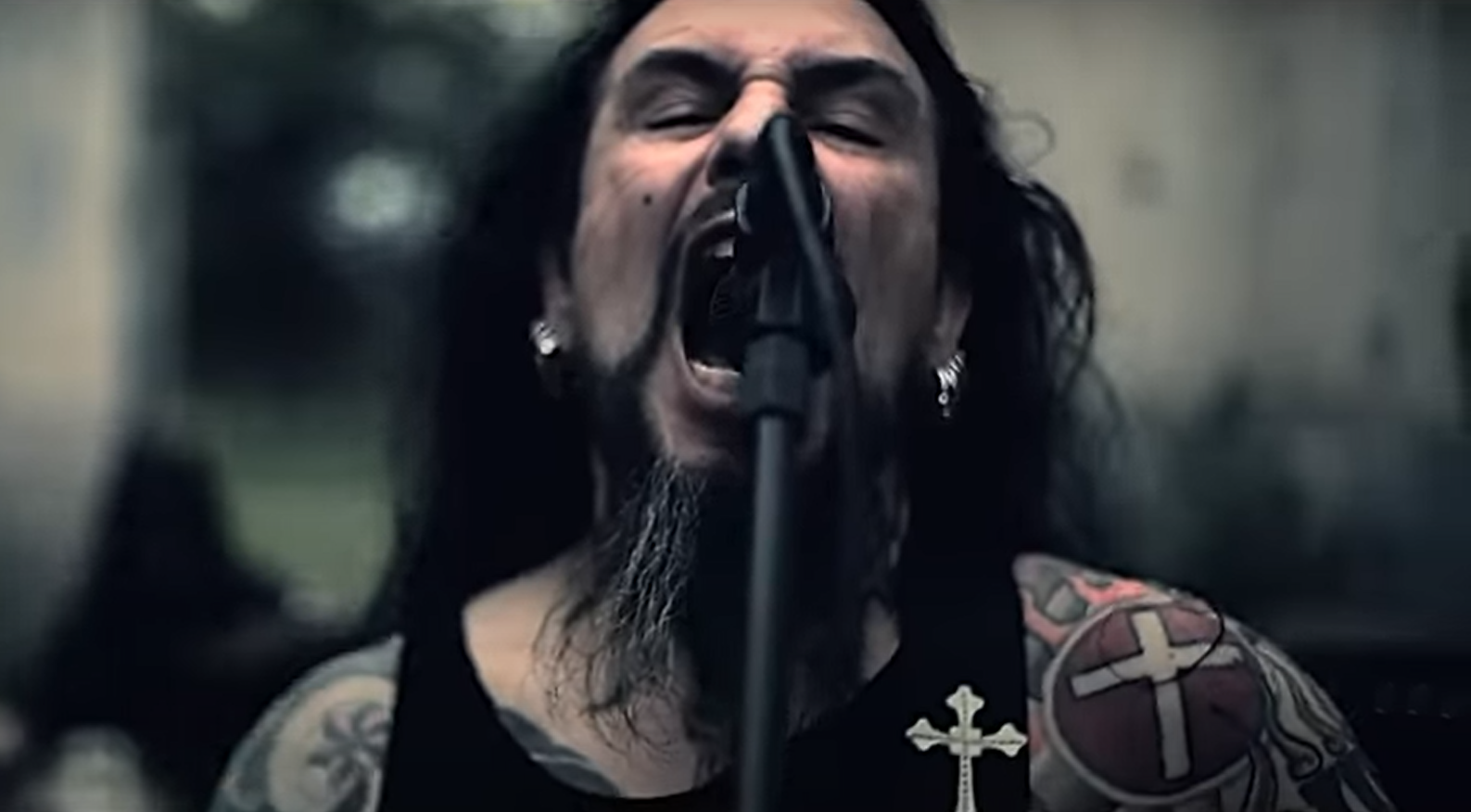
You should start out by practicing what it feels like to push the sound out of your voice box instead of pushing from cords in your throat. This skill can be learned with a partner who pushes on the top of your shoulders while you breathe deeply into your belly, then exhales forcefully through pursed lips ending wherever they want them to (usually naturally).
Your goal here is not only to learn how this kind of breath support feels but also to learn where in asthmatic’s case air builds up inside lungs & causes wheezing vs normal breathing process which involves inhaling into belly then expanding ribcage which allows lungs to fill completely with air.
3. Death metal is restraint with a slower release of air
You must be able to hold back and release your breath in a slow and controlled manner. This is very important when singing death metal because you will need this skill for all types of vocals, including the higher-pitched screams that seem so popular with death metal bands these days. To practice holding your voice on one note at various lengths while focusing on tightening muscles around the neck & throat then releasing them, try humming along with songs by taking short breaths without losing tone or pitch (useful exercise).
You can also try making sounds like an angry growl or dog bark slowly moving from high pitches down to low notes. Practicing inhaling quickly followed by exhaling sharply through pursed lips ending wherever they want it to (usually naturally) – cord tension & position relative tonality/resonance chambers which all contribute towards creating different sounds for each type of vocals (screams vs. growls).
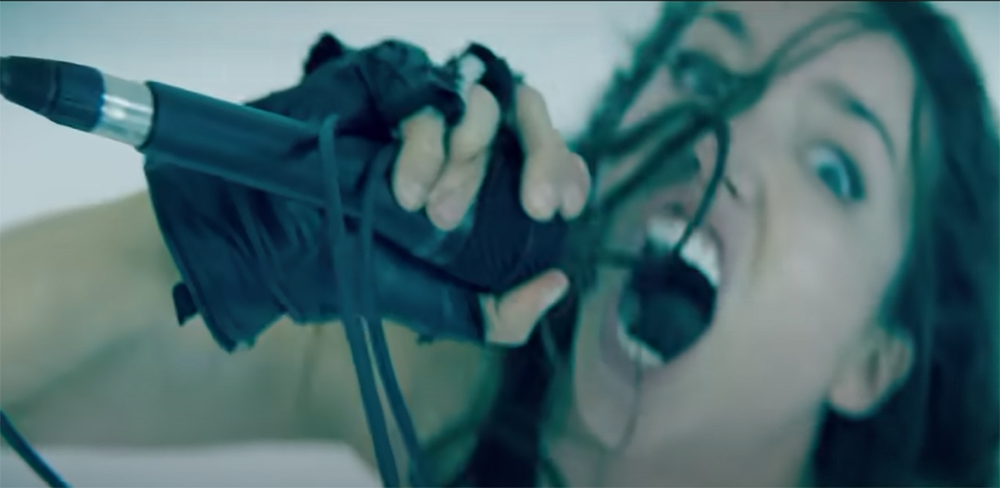
When growling or yelling lower notes with the voice box opened off by expanding throat muscles, tone drops but volume increases – this is how you create the sound of a deep manly voice via greater lung capacity and less pressure.
What are the Different Types of Metal Growls?
There are two main types of death metal vocals: guttural (from the stomach) & screeching (from the head).
The guttural type [1] involves tightening musculature around the neck/throat while performing an open-mouth glottal fry to get that low gurgling noise in your chest. Whereas, for higher-pitched screams try raising the larynx closer towards the soft palate then lowering it suddenly when producing screams so cords slap together creating a high-pitched squeal.
The screeching type [2] of death metal vocals involves opening mouth wide & rolling tongue back towards the roof of the mouth while performing an open-mouth glottal fry to get that higher pitch – this is how you create the sound of a scream by using more lung capacity and less pressure.
Mid-Range Growl
Mid-range death metal growls are focused on squeezing throat muscles while performing a hybrid of open & closed mouth glottal fry to get that lower mid-tone – this is how you create the sound of a deeper manly voice via greater lung capacity and less pressure.
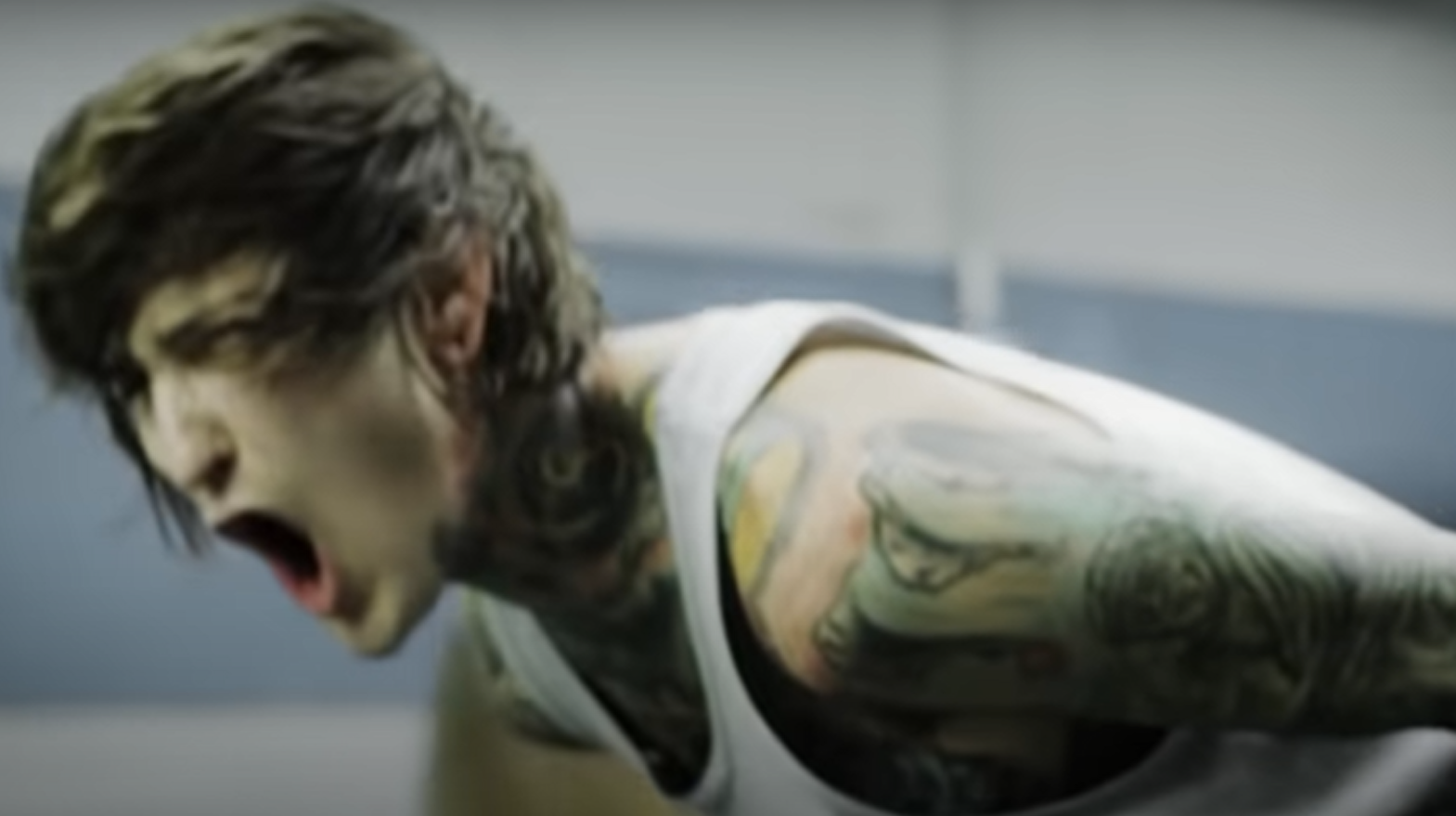
For higher-pitched screams try raising the larynx closer towards the soft palate then lowering it suddenly when producing screams so cords slap together creating a high-pitched squeal [3].
Low Growl
Low growls involve using throat muscles to create a hybrid of open & closed mouth glottal fry while squeezing tight larynx and diaphragm simultaneously – this is how you create the sound of a lower tone by using less lung capacity and more pressure.
Low Guttural Growl
Low guttural growls are focused on squeezing throat muscles while performing an open-mouth glottal fry to get that low gurgling noise in your chest. Whereas, for higher-pitched screams try raising the larynx closer towards the soft palate then lowering it suddenly when producing screams so cords slap together creating a high-pitched squeal.
Pig Squeal
Pig squeals [4] are screeches that have been lowered from the mid to low range. Pig squeals, also known as “gryphon calls” involve a mix of open & closed mouth glottal fry while squeezing tight larynx and diaphragm simultaneously – this is how you create the sound of a lower tone by using less lung capacity and more pressure.
Inhale Scream/Shriek
Inhale screams or shrieks involve beginning with an open mouth and inhaling air quickly while squeezing throat muscles. This is how you create the sound of a scream by using less lung capacity & more pressure.
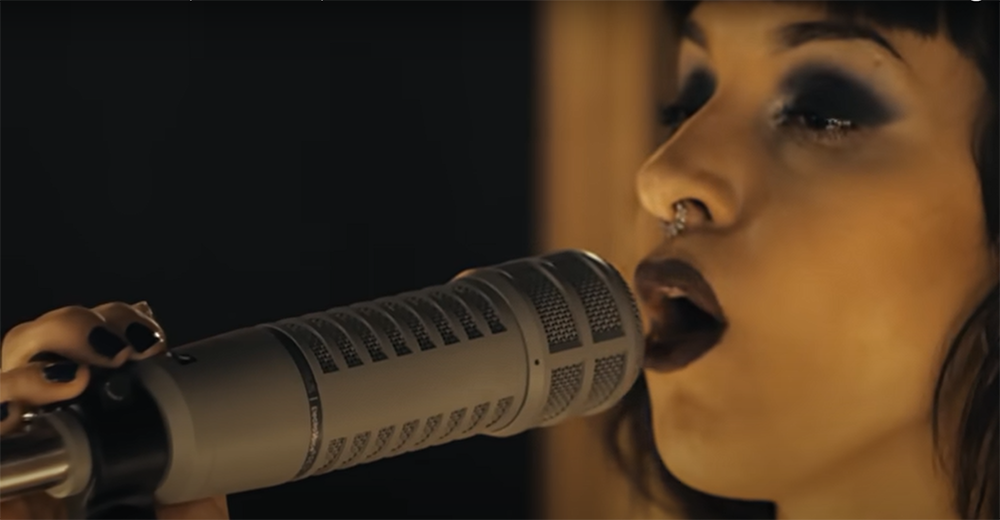
Fry Scream/Shriek
Fry scream is a catchall term for certain sorts of screaming that emerged in the metal music genre.
Fry screams may vary considerably in pitch, tone, and distortion, but they all use the same fundamental approaches. This is why Phil Bozeman’s, Dickie Allen’s, Randy Blythe’s, and Devin Townsend’s screams are all classified as Fry Screams despite their disparate tones.
The fry screams are all finished with an exhale. Because the detailed anatomical explanation of fry screams is prolix, lengthy, and still disputed, it will not be addressed in this book (and would only make it much longer).
Fry Screams are characterized by a white-noise-type, wet and smooth distortion. Some fry screams can sound “goblinish high” and “gurgly”, while others can sound rumbly low and terrifying, but they all have a certain amount of voice in them.
The death metal screams are what most people think of when they hear the word metal.
The pitch of the scream, not the style (Fry, False Cord, or Shout), is referred to as High, Mid, and Low.
Fry is the most versatile screaming technique because it has the widest range of screams from super high to super low with no audible voice, to being able to sing melodies and so on [5].

Tunnel Throat Scream
Tunnel throat screams are really the same thing because shrieking is just a subset of screaming.
The difference between them lies in their intensity and pitch; tunnel throat screams tend to be less intense than fry or shout screams, but they can still pack quite a punch when used correctly.
Tunnel throat vocals were characterized by his low guttural voice that was described as sounding like he had “a sock stuffed in his mouth”.
There’s no denying it: getting your vocal cords around this sound takes serious practice, so don’t feel too bad if you’ve never been able to do it!
KVLT Scream
The term “KVLT” is used by black metal fans to describe themselves and their music. Black metal fans utilize “KVLT” to designate more obscure, early bands that exemplify the genre and demonstrate their insider knowledge. Metal (or other music) enthusiasts who dislike their intense fandom and the perception of the subgenre may use “KVLT” to mock their devotion [6].
KVLT screams may vary considerably in pitch, tone, and distortion. They are all finished with an exhale. Because the detailed anatomical explanation of fry screams is prolix, lengthy, and still disputed it will not be addressed in this book (and would only make it much longer).
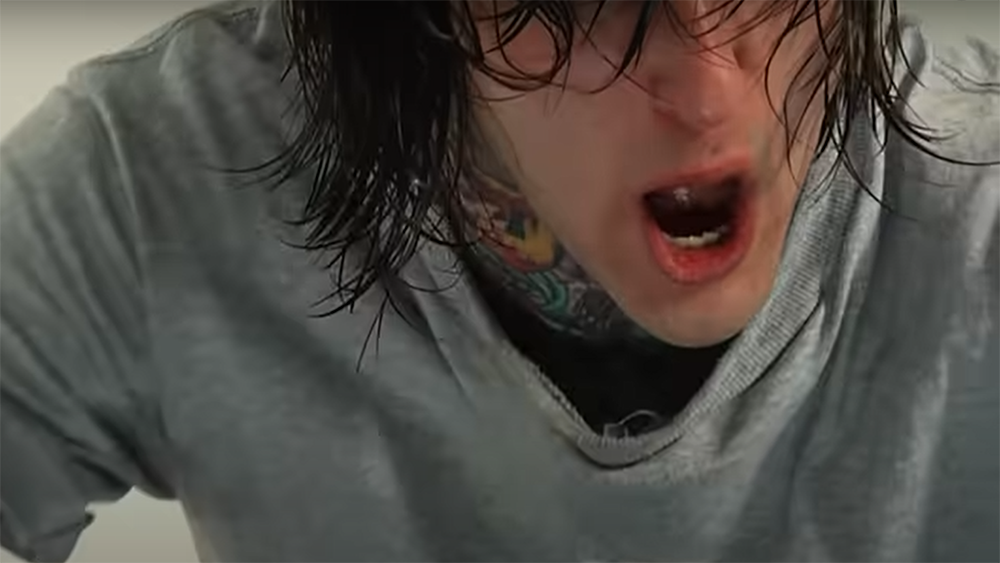
Finding your Death Metal Scream:
Vocal Fry
The vocal fry register (also known as pulse phonation, creaky voice, popcorning, glottal fry, glottal rattle, scrapping) is the lowest vocal register and is made by a loose glottal closure that allows air to bubble through gradually with a popping or rattling sound of a very low frequency.
During phonation, the arytenoid cartilages in the larynx are drawn together, compressing the vocal folds considerably and making them relatively loose and compact. This process creates a large, unevenly vibrating mass within the vocal folds that produces the distinctive low popping or rattling sound when air passes through the glottal closure.
In some circumstances, the register (if well controlled) can extend far below the modal voice register, going as low as 8 octaves lower, such as with Tim Storms who holds the world record for lowest frequency note ever produced by a human, a G-7 at 0.189 Hz [7].
Combine the Vocal Fry with Speaking and Singing Voice
Many singers use vocal fry when they speak, making it sound like they are growling. This can be seen as an imitation of death metal vocals or a more general influence from spoken language.
The particular timbre created by adding the creaky phonation effect creates extra subharmonic sounds that make it easier for listeners to hear what is being said since vowels are usually defined by their harmonic overtones.

This type of voice is also known as raspy or gravelly voice. It’s not easy to produce this kind of voice without sounding vulnerable and weak at the same time. However, men tend to have better success in pulling off vocal fry than women most likely due to their deeper voicing capabilities.
However, if you want to learn how to sing death metal then practicing singing with your speaking voice using a heavy amount of vocal fry can be very effective. You don’t even need an actual song for this method because just repeating random words repeatedly while maintaining that low tone will help increase your endurance on how long you can hold out before passing out.
Tips for Singing Death Metal:
1) Warming up
Screaming and growling are stressful for your vocal cords, which contain sensitive tissues. They, like every other muscle in the body, need to be warmed up before use.
One way to do this is to mix one teaspoon of salt and a quarter teaspoon of baking soda in half a glass of water. To prepare yourself for the extra activity, use lukewarm water to moisten your vocal cords and gargle. Rinse for 30 seconds and make sure the water isn’t too hot.
Begin by doing the vocal exercises once your voice is ready. These warm-up activities include learning the complex and strenuous vocals used in death metal, beginning with simple and easy ones and gradually increasing in complexity.
Begin with vocal exercises that include “hee-haw” sounds as a warm-up. Growling “Wow” and screaming “Yeah” is another good warm-up exercise. This game helps you prepare and tone your lower voices.
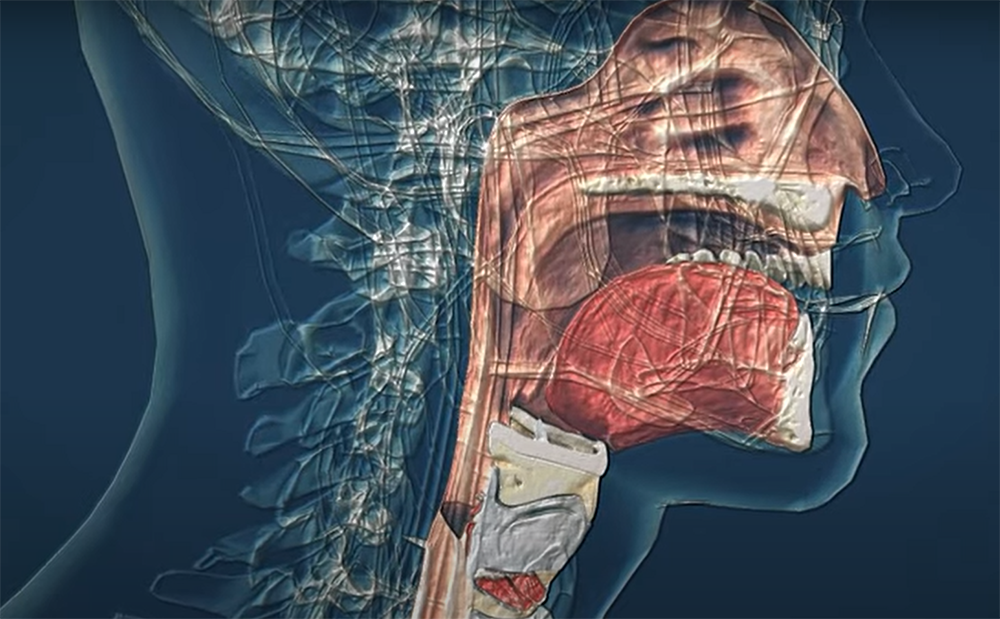
2) The “Breath-hold Technique”
This method is a good way to increase the strength of your screams and growls. To do this, you must take in as much air as possible before singing or screaming. Then listen for that moment when there’s no breath left in your lungs that have become empty.
At that point, push out all of the remaining air from your diaphragm while holding your nose closed with one hand and plugging up both ears with two fingers on each side (to make sure nothing comes back in). You should be able to scream without gasping after making yourself hoarse by doing this exercise repeatedly [8].
3) Tongue Position
Sing a straight note in your regular voice (it doesn’t have to be a shriek or anything, but it does need to be something where you sing and sustain a comfortable-sounding note for a few seconds).
Pay close attention to your tongue throughout this process. Your tongue will naturally appear to be pushed forward (but not out of your mouth).
Then, in a death metal voice, sing a note. Instead of extending your tongue out forward, try making a deliberate effort to pull it back slightly (not all the way back into your throat, but push back a little, keeping it firm).
This technique of gently drawing your tongue back helps you maintain greater vocal control as you push the air out. It may appear to be odd, but it works.
4) Throat Position
Another approach for death metal vocals is to consider how you position your throat while screaming, growling, and gurgling. In addition, this all goes back to the contradiction between how this style of singing is regarded and what it really takes to do it well.

When you’re doing low growls or death screams, make sure your throat is relaxed. Remember, death metal vocals are a form of control and self-restraint. It’s not about being aggressive or screaming at the top of your lungs.
If your throat is tight, it’s usually because you’re straining. And strain can harm your voice. If you let go of your throat without forcing air out, you’ll notice a natural death metal voice emerging. That’s something you can develop and define.
5) Air-push technique:
- Take a big belly breath;
- As you begin to sing the first “death note”, you don’t launch all of the air out at once;
- Instead, keep a lot of that air in as you slowly release a little at a time;
- When that note or sentence is finished, take a deep breath and do a slow release;
- You see, your air isn’t released to the point where you’re solely concerned with that one note. It’s kept back so you may maintain a sense of fulfillment;
- It resembles doing yoga. You breathe in deeply, and then as you move on to the next stage of the movement, you softly exhale;
The disadvantage of death metal vocals is that they require a higher level of breath control than normal singing. This is the price to pay for not shouting or projecting.
What About Vocal Effects for Death Metal?
You should try out the singing death metal techniques without any distortion on your microphone first because if you can’t do it right there is no point in turning up the gain and ruining your voice for good.
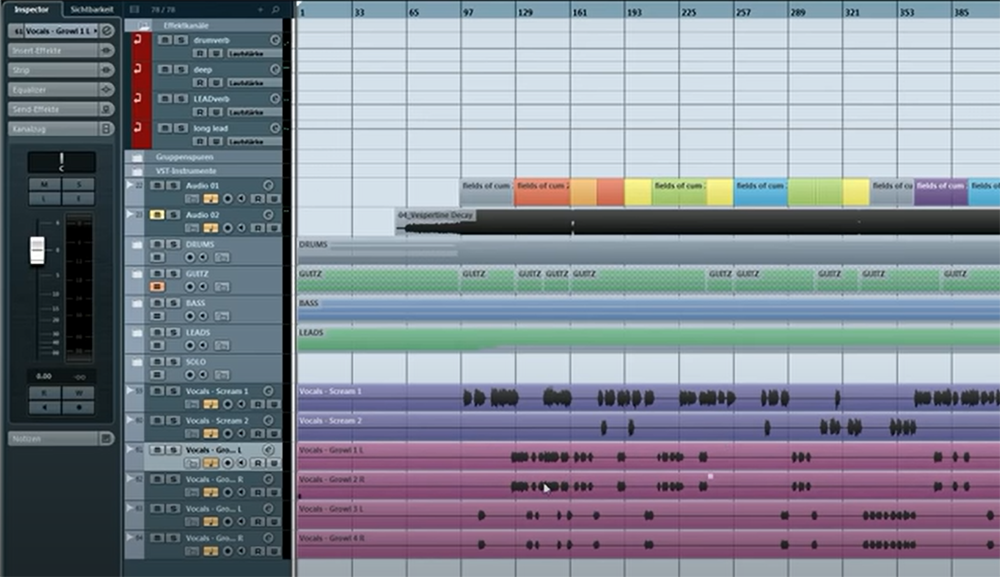
Remember also that these effects will only work when you really bring them together with actual words – so make sure they fit what you want to say before using them!
It may take a few months of practice for this style of death metal singing but once mastered its tone & pitch can be reproduced at will by simply practicing breathing exercises every day (a minimum of 30 minutes per session).
Keep practicing until all beginner’s mistakes such as vocal tension, nasal resonance, and closed throat are gone.
Exercises For Death Metal Vocals:
1) Timed Hissing:
- This exercise is all about timing. Start by counting aloud until you reach 60 seconds, keeping a steady hiss going throughout the entire minute. The goal is to see how many full minutes of timed “hissing” you can do before your mouth gets tired or weak. You’ll be surprised at how much this will strengthen your diaphragm;
- Once reaching 90 (or earlier if necessary), switch over to inhaling for 5 seconds and exhaling for 10 seconds with no sound, then resting an additional fifteen seconds between each cycle of inhale/exhales. Do as many cycles of these inhalations & exhalations as possible within one minute–the trick here being not to let the breath break during those 10 second exhales;
The idea is to strengthen your diaphragm while keeping it relaxed and loose during the inhaling portion of this exercise, then tighten up that same muscle (while still breathing deeply) during the ten-second exhale part – without breaking your breath by holding it for too long. 15 seconds rest in between each cycle should allow you enough time to catch your breath without sacrificing any strength or endurance.
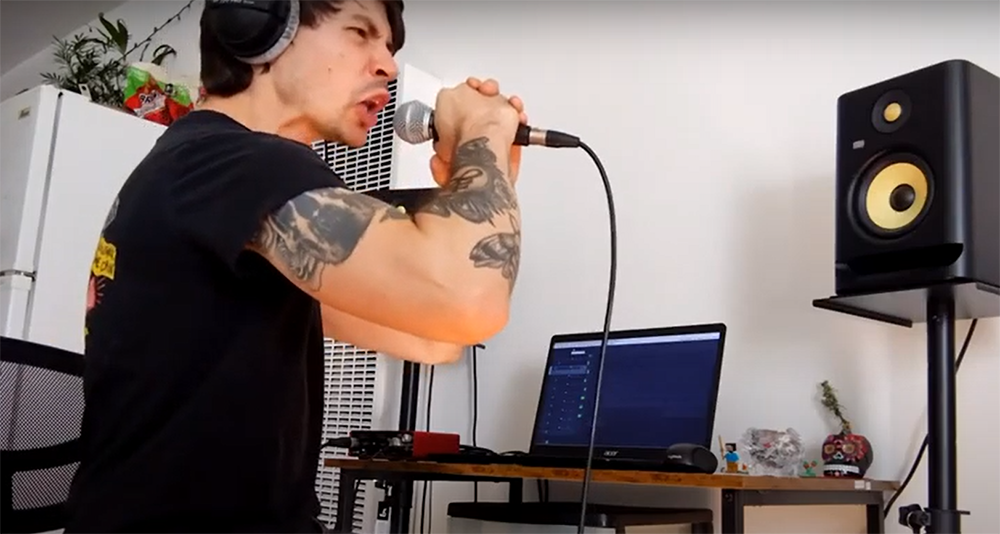
2) Growling (False Cord Technique) and The Heavy Sigh Method
Growling is one of death metal’s most fundamental features. Here’s the good news: you already have the foundation for how to growl. The very foundation of growling is something we do every day. You’ll most often do it as soon as you get home from work and collapse on a bed or a sofa.
The sound of this gurgling is the heavy sigh. Growling is based on the heavy sigh since when you breathe like that, you are not using your real cords to make the sound; rather, you are utilizing your false cords.
False cords are located near the vocal cords, but instead of controlling pitch and sound, they serve as the gate that opens and shuts when you eat or breathe air, ensuring that the appropriate passage is open so you don’t choke.
Try it right now: consider the chores you have to do later that you don’t want to do, or release some steam from a stressful activity of your day by sighing. Look at this. Observe how relaxed you feel when you do it.
Don’t try to growl or force anything out. Simply take a regular sigh. Now, press and release the belly button for a longer period. Experiment with the sound as it comes out by shifting your tongue or altering the form of your throat. Remember to remain relaxed and never force yourself.
This will begin lighter, but with enough effort and practice, it will acquire power. Don’t try to force yourself towards a harsh sound by pushing. That noise will come – all you have to do now is wait and practice diligently [9].
FAQ
1. How can I make my voice sound like death metal?
To start, you’ll want to focus on the proper breathing technique. Death metal vocalists emit a lot of air from their lungs when they sing and scream, so take some time to practice exhaling deeply without any strain or tension in your throat or diaphragm – just let it all out!
Once you have that down, try adding a growl under your breath as if saying “growl” but with no actual sound being made by your mouth. You should feel the rumbling vibration coming up through your chest and into your throat that is what creates that signature death metal sound.
Now experiment with different pitches while keeping in mind where each one feels comfortable for you (higher/lower). Just like in regular singing, you’ll need to find the optimal pitch level that allows for maximum resonance while minimizing any tension in your throat.
Practice some more and soon enough, you will be able to hit those high pitches like a pro.
2. Does metal screaming damage your voice?
With all of the vocal experts’ research demonstrating that a voice may produce harsh, piercing screams without destroying it, many performers are still concerned about metal screaming. It is completely untrue that “metal screaming will only harm your voice” [10].
3. How do you do the screamo voice?
Screamo singing may be damaging to your voice since it puts strain on the vocal cords, and if done incorrectly, you might permanently damage your voice.
Here is how you can do the screamo voice:
- Breathe from the diaphragm. One of the most essential skills to acquire when learning any sort of singing style is how to breathe from your diaphragm. This improves the capacity to take in more oxygen, allowing you to hold notes (or screams) for considerably longer and avoiding out of breath while performing;
- Your stomach should expand as you inhale and contract as you exhale when you breathe from your diaphragm. It takes time to master breathing correctly and naturally from your diaphragm. As a result, you should begin using daily deep breathing exercises to improve your technique;
- Get the proper voice tension. Vocal cords have different degrees of tension depending on how high or low you sing or scream. When you sing in a low voice, your voice box descends, reducing vocal chord tension. When you sing in a high voice, your voice box rises, increasing vocal chord pressure;
- Humming while your automobile’s engine is on gives you exceptional practice. It warms up your vocal cords and allows you to practice moving from high to low registers while humming along with the sound of your vehicle’s engine;
- To be effective, begin at a low volume. Many inexperienced screamo vocalists damage their voices by attempting to scream too loudly — but one of the most well-kept secrets of successful singers is that they really scream rather quietly (as strange and paradoxical as it may sound);
- On your first try, don’t try to make a lot of noise at once. Start small and gradually increase the amount as your voice improves. Screamo is wonderful because it allows you to let the microphone do most of the work while you’re performing. When amplified by a decent sound system, even a “quiet” scream can rattle your audience’s teeth;
- You may also make deeper sounds by cupping your hands around the microphone or moving your mouth in certain ways as you sing. The ideal thing to do is just play with it and see what sounds you like until you discover one you like [11];
4. Why do death metal singers growl?
Death metal singers growl because it sounds cool. In technical terms, a growl is “the lowest vocal register producing the lowest frequencies of the human voice”.
You may have observed that many singers and speakers use deep tones when they want to sound serious or authoritative. It gives the gravity and intensity of their words because it creates a sense of authority in the listener’s mind. This happens even if you don’t understand what exactly these people are saying – you will still believe them since you feel as though they know more about whatever they’re talking about than you do!
In death metal singing, this effect can be accomplished by using your throat muscles to vibrate air at incredibly low pitches while also limiting resonance from other parts of your body; essentially speaking with an artificially lowered pitch range without having to use your vocal cords (which require much more airflow to function properly).
5. Can a scream damage your vocal cords?
You are slamming your vocal cords even harder during each vibration when you yell or scream. This can cause you to have a hoarse voice. Your vocal cords are being damaged in this way. When your vocal cords are swollen, they aren’t able to vibrate properly, which causes the sound of your voice to change [12].
6. Do death metal singers use effects?
Yes, death metal singers use effects on their voices. They often employ distortion and other forms of signal processing to alter the sound of their voice. Death metal bands are especially fond of using digital vocal processors like Auto-Tune in conjunction with synthesizers to create textured layers upon which they can layer vocals or even entire songs.
7. How do you repair damaged vocal cords from screaming?
If your vocal cords are already severely damaged/chafed, the only way to repair them is through rest. This means not talking or singing at all for a period. You can also use medication like steroid sprays and anti-inflammatory medications (e.g., ibuprofen).
You shouldn’t talk right after you scream since it will irritate your throat further; give yourself about 15 minutes between screaming sessions before using your voice again.
8. What are the signs of damaged vocal cords?
There are 3 signs of damaged vocal cords [13]:
- Hoarseness or voice change for two weeks. Hoarseness is a general term that can represent a variety of voices, such as a raspy or breathy voice;
- Exhaustion of the voice. Vocal weariness can be caused by excessive usage of the voice.
- Throat irritation or difficulty speaking;
- Loss of voice;
If you have any of these symptoms, it’s best to take at least a week away from singing and see if the problem gets better on its own. If not, go to an ENT doctor for further evaluation. An ENT can do tests with special equipment that lets them look inside your throat/vocal cords without needing surgery (e.g., stroboscopy).
Useful Video: How to Sing Low Growls: Death Metal Vocal Tutorial
References:
- https://www.wikihow.com/Do-Harsh-Death-Metal-Vocals
- https://metal.fandom.com/wiki/Death_growl
- https://www.musicianwave.com/metal-screaming-and-growling/
- https://www.urbandictionary.com/define.php?term=pig%20squeals
- https://singandscream.com/how-to-fry-scream/
- https://www.dictionary.com/e/pop-culture/kvlt/
- https://en.wikipedia.org/wiki/Vocal_fry_register
- https://www.jasonstallworth.com/sing-death-metal/
- https://melodybeats.co/how-to-sing-death-metal/
- https://www.sweetwater.com/insync/how-to-metal-scream-without-hurting-your-voice/
- https://www.wikihow.com/Sing-Screamo
- https://theconversation.com/curious-kids-why-might-you-wake-up-without-a-voice-132592
- https://utswmed.org/medblog/vocal-cords-care/


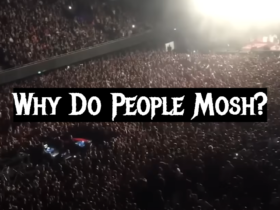


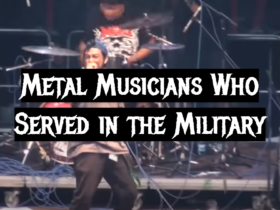
Leave a Reply